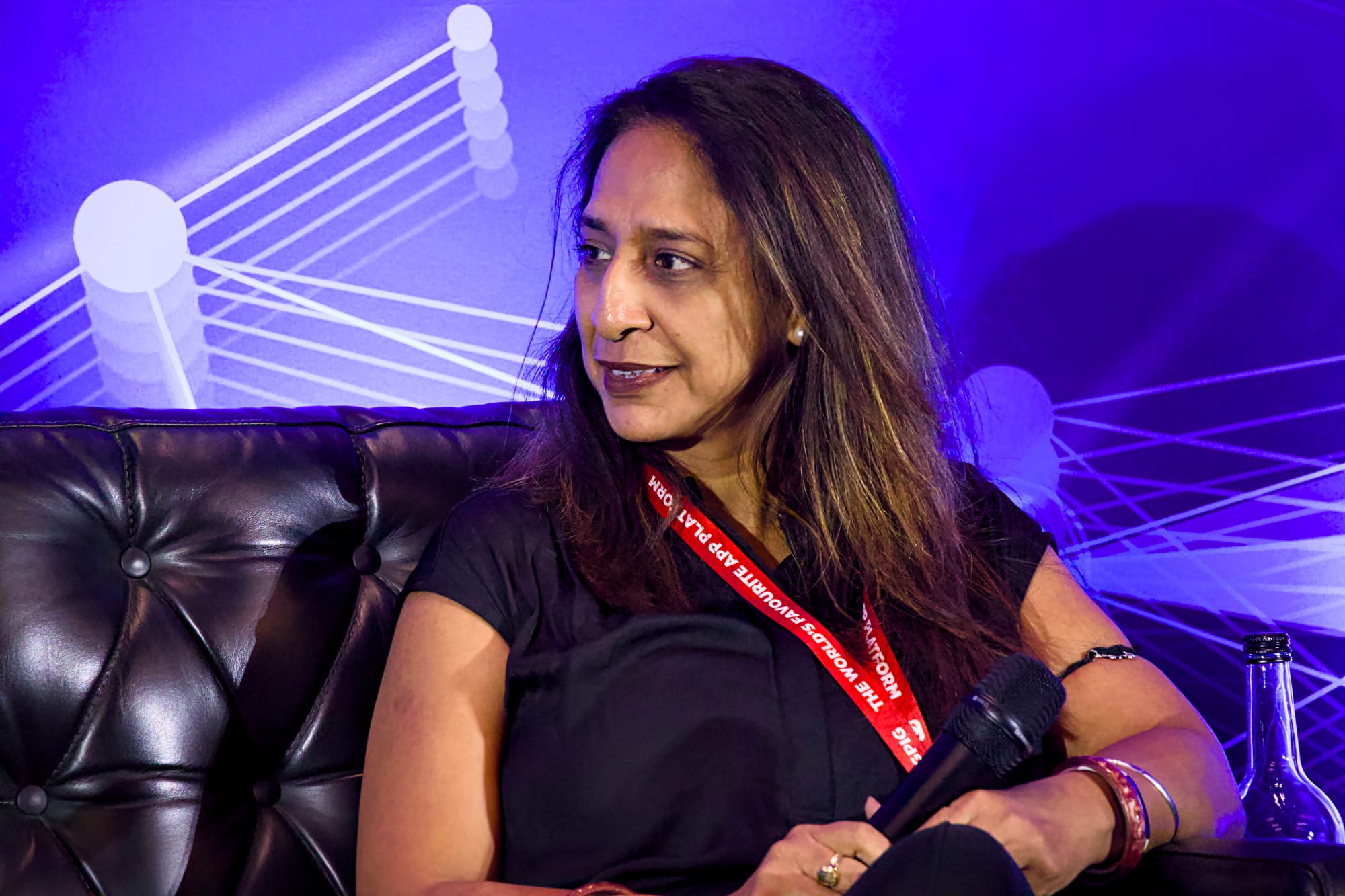Finding the right publishing tech for your business model
A tech centric panel at the Future of Media Technology explored the software needed to support today’s revenue models – and asked if we should buy or build.

Putting the “technology” into the Future of Media Technology, this afternoon panel looked at choosing the right tech and partnerships to deliver the revenue you need.
The Panel
- Charlotte Tobitt, UK Editor, Press Gazette (moderator)
- Payal Sood, Technology Director, Haymarket Media Group
- Simon Regan-Edwards, Product Director, Mail Digital Publishing
- Edward Roussel, Head of Digital, The Times and Sunday Times
- Stewart Robinson, Managing Director, Full Fat Things

Haymarket started pivoting from a digital ad model to an audience model when they saw the way the world was moving, explained technology director Payal Sood. They focused on content that readers would sign in for, and then developed that into a subscription model. Most of the growth they’ve seen from that was through individual subscriptions, but now they’re targeting corporate ones. They want to treat these bigger customers like more like partners, involving them in new product development.
However, this brings data management challenges: you need to make sure you’re only storing what you need to store, and you need to be transparent with the customer. Also, there’s a lot of data cleansing involved, depending on the source. Without that, it’s not meaningful or useful.
The flexible paywall

Many publishers which Stewart Robinson, managing director of Full Fat Things, works with now see themselves as lead generation businesses, not ad ones. They need to know their audience to be able to sell that targeting to customers.
“I’ve seen a lot of Google bashing today. We have seen a lot of B2B publishers with paywall using Google flexible sampling, and using that as a marketing channel. We’ve seen massive growth because there was great content that was completely hidden behind a paywall.”
Meanwhile, over at the Mail, they’ve taken a digital newspaper, grown it over a decade, and now they’re moving to a subscription product — and they’re “ahead of target” on that. Simon Regan-Edwards, product director, says that having one newsroom and two business models works, but is culturally challenging.
The Times has had a paywall for 14 years now. They’ve gone from an ad dominated business, to a subscription dominated one. “The thing that hasn’t changed is journalism,” says Edward Roussel, head of digital. “How do you tell a brilliant story on mobile, and how does that differ from print?”
Success is at the intersection of brilliant journalism, collaboration with the product and marketing team, and churn reduction, he suggested. You need to ensure you retain those hard-won subscribers. If they come back more than 16 times a month, their propensity to churn drops dramatically. The app and newsletters also lead to propensity drops.
The role of audience engagement
Stewart sees more flexibility emerging in paywalls, but also more publishers building data products from their existing content. One publisher is using Patreon rather than their own subscription tech, and reading the rewards in terms of community engagement and feedback.

Readers want to feel involved, says Edward. A couple of years ago. The Times started enforcing a real names policy on their comments, and it’s massively cleaned them up. Haymarket enforced registration for comments, which increased quality, but dropped numbers. So they’ve dropped comments, and moved to direct feedback from readers in more of a closed loop.
Build or buy your tech?
Stewart suggests that publishers need to decide whether they’re software companies or not. Is it core to the business? You need really good glue across your systems, so the data can flow fluidly between them.
The Times have moved to a new CMS, as part of a modernisation of their tooling. Journalists have more flexibility to drag and drop elements to layout a story. They have the co-pilot AI software mentioned earlier, helping editors. They’re very much of the view that they’re not a software company, so they select tools which they then augment and integrate.

Simon is also a “buy” man — but has still ended up building stuff they now need to get rid of. Great partners are the way forwards, he suggests. You should have a cross-functional team, co-located with editorial, too. Having that connection between editorial, product, and tech is the glue, the secret sauce, he says.
Payal doesn’t mind building, unlike the others. Haymarket has built their own CMS, seeing it as core. It also gives them scale, as they launch, relaunch and acquire all the time. It’s not economic for them to launch on a software as a service platform sometimes. For them, it amens more sense to keep building and upgrading their CMS.
Other tidbits
- Mail+ is still in the experimentation phase. What’s been fascinating, says Simon, is how interested the journalists are in which feature lead to conversions. The very long form articles are part of that. At present, they’ve very much focused on these premium features.
- The Times still has digital advertising supporting its subscriptions — and the data they collect through those subs helps increase the value of ads. And they have deals with platforms like Apple, Google, and OpenAI. And they’re also exploring diversification, with puzzles, Money Mentor and so on.
- Perhaps not surprisingly, for a bunch of technologists, they all see the first step towards greater relationships with readers is getting them to sign up so they can capture their data…





